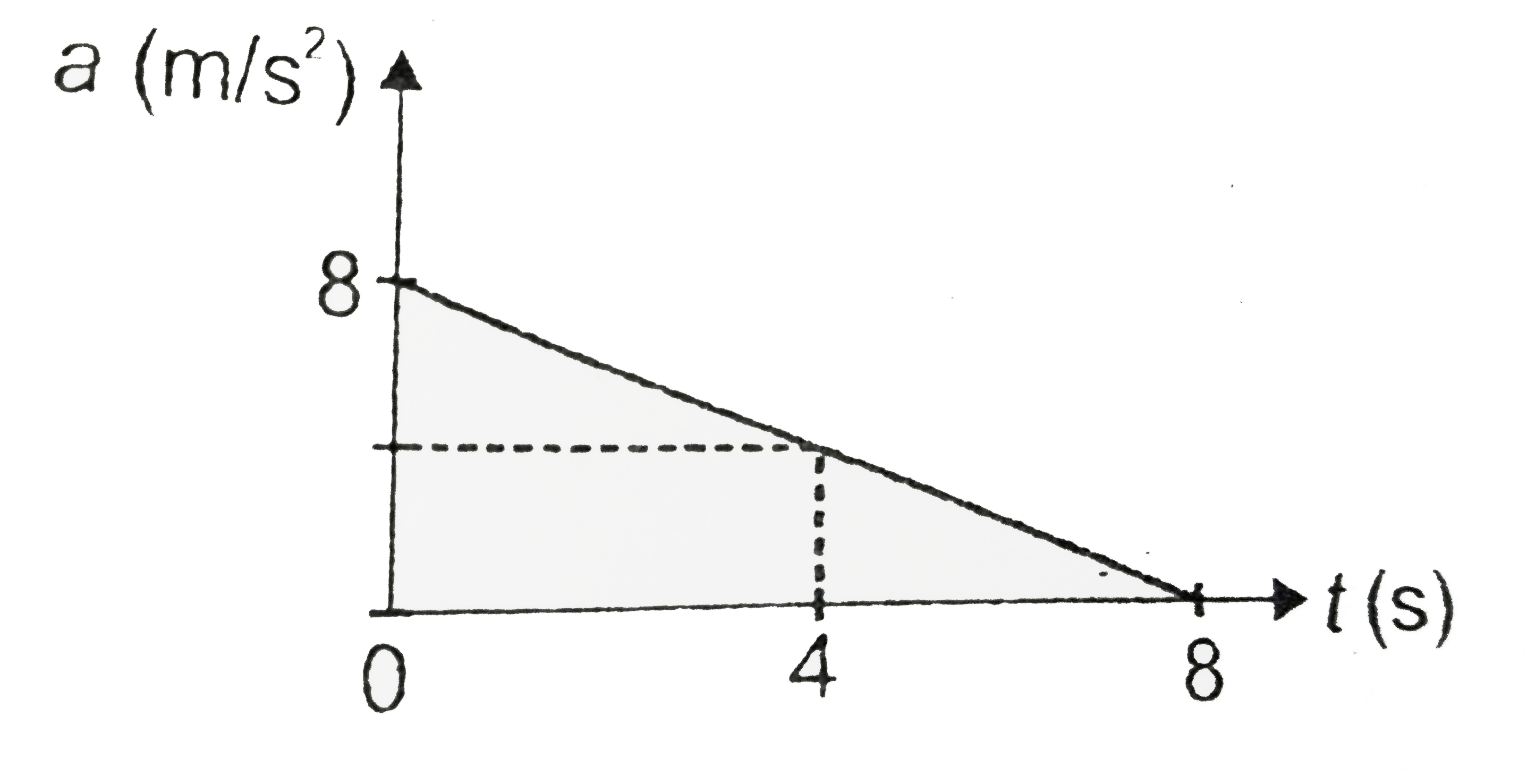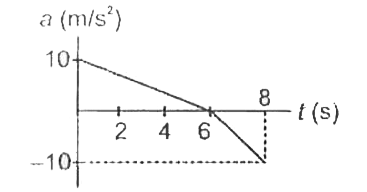The acceleration of a particle moving along x-axis is given by a = 6t. Initially it has a velocity of 4m/s along negative x-direction and it is at the origin. Then select correct options.
With in 2 sec is will return to origin.
With in 2 sec it will cover (323√3) m distance
It's velocity when it return back to origin will be 8m/s
None of these
The correct Answer is:A, B, C
To solve the problem step by step, we need to analyze the motion of the particle given the acceleration, initial velocity, and position.
Step 1: Understand the Given Information
- Acceleration a=6t (where t is time in seconds)
- Initial velocity u=−4m/s (negative indicates direction along negative x-axis)
- Initial position x0=0 (origin)
Step 2: Find the Velocity as a Function of Time
The acceleration is the derivative of velocity with respect to time:
a=dvdt=6t
Integrating both sides with respect to time t:
v=∫6tdt=3t2+C
To find the constant C, we use the initial condition v(0)=−4:
−4=3(0)2+C⟹C=−4
Thus, the velocity as a function of time is:
v(t)=3t2−4
Step 3: Determine When the Particle Stops
The particle stops when the velocity v=0:
3t2−4=0⟹3t2=4⟹t2=43⟹t=2√3≈1.155s
Step 4: Find the Displacement as a Function of Time
The displacement x can be found by integrating the velocity:
x=∫vdt=∫(3t2−4)dt=t3−4t+C′
Using the initial condition x(0)=0:
0=(0)3−4(0)+C′⟹C′=0
Thus, the displacement as a function of time is:
x(t)=t3−4t
Step 5: Calculate the Displacement at t=2 Seconds
To find the displacement at t=2:
x(2)=(2)3−4(2)=8−8=0
This means the particle returns to the origin after 2 seconds.
Step 6: Find the Velocity at t=2 Seconds
Now, let's find the velocity when it returns to the origin at t=2:
v(2)=3(2)2−4=3(4)−4=12−4=8m/s
The velocity is 8m/s in the positive x-direction.
Summary of Results
1. The particle returns to the origin after 2 seconds.
2. The velocity when it returns to the origin is 8m/s.
- Acceleration a=6t (where t is time in seconds)
- Initial velocity u=−4m/s (negative indicates direction along negative x-axis)
- Initial position x0=0 (origin)
The acceleration is the derivative of velocity with respect to time:
a=dvdt=6t
Integrating both sides with respect to time t:
v=∫6tdt=3t2+C
To find the constant C, we use the initial condition v(0)=−4:
−4=3(0)2+C⟹C=−4
Thus, the velocity as a function of time is:
v(t)=3t2−4
The particle stops when the velocity v=0:
3t2−4=0⟹3t2=4⟹t2=43⟹t=2√3≈1.155s
The displacement x can be found by integrating the velocity:
x=∫vdt=∫(3t2−4)dt=t3−4t+C′
Using the initial condition x(0)=0:
0=(0)3−4(0)+C′⟹C′=0
Thus, the displacement as a function of time is:
x(t)=t3−4t
To find the displacement at t=2:
x(2)=(2)3−4(2)=8−8=0
This means the particle returns to the origin after 2 seconds.
Now, let's find the velocity when it returns to the origin at t=2:
v(2)=3(2)2−4=3(4)−4=12−4=8m/s
The velocity is 8m/s in the positive x-direction.
1. The particle returns to the origin after 2 seconds.
2. The velocity when it returns to the origin is 8m/s.
Topper's Solved these Questions
Similar Questions
Knowledge Check
- Question 1 - Select One
The acceleration of a particle moving along x-axis is given by a = 6t. Initially it has a velocity of 4m/s along negative x-direction and it is at the origin. When will it return to the origin (in sec.)?
A3B4C2D1 - Question 2 - Select One
The displacement of a particle moving along x-axis is given by :
x=a+bt+ct2
The acceleration of the particle is.AbBcCb+cD2 c - Question 3 - Select One
The displacement x of a particle moving along x-axis at time t is given by x2=2t2+6t. The velocity at any time t is
A4t+6xB2t−xxC4t+6D2t+3x
The acceleration-time graph of a particle moving along x-axis is shown in the figure. If the particle starts with velocity 3 m/s at t = 0, find the velocity of particle at t = 4 s.
 View Solution
View SolutionA particle moves along a straight line.The acceleration of the particle as function of time is given by a=6t−12 .Initial velocity of particle is 9ms .Find distance (in meters) travelled by particle in 4 seconds.
View SolutionAcceleration of a particle in x-y plane varies with time as a=(2tˆi+3t2ˆj)m/s2 At time t=0, velocity of particle is 2m/s along positive x direction and particle starts from origin. Find velocity and coordinates of particle at t=1s.
View SolutionThe acceleration - time graph for a particle moving along x - axis is shown in figure, If the initial velocity of particle is −5m/s, the velocity at t = 8 s is
 View Solution
View SolutionPosition of a particle moving along x-axis is given by x=6t−t2+4, where x is in metre and t is in second. Which of the following is correct?
View Solution

